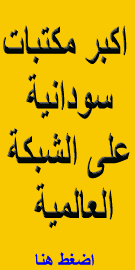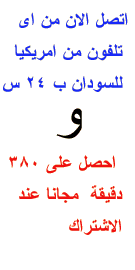Lighting and Energy Usage in
Sudan
Sudan
is the largest country in
Africa
with an area of about 2.5 million square kilometer with estimated population around 37 million. The area of
South Sudan
is about 640,000 square kilometer with population of about 9.7 million. This number is likely to increase since refugees and displaced southern are coming back home from the neighboring countries and north
Sudan
.
Sudan
is rich in natural resources such as water, animal, forest, mineral, and land. The economy is extremely agricultural since oil had been discovered as a new source of energy at the end of 20th century,
Sudan
is still considered as one of the least developed countries in the world.
About 70% of the Sudanese population live in rural and remote areas and have no access to electricity
. In these areas, biomass in the form of wood, charcoal, agriculture residue, and dung are used for cooking and heating, whereas electricity and petroleum products are consumed in the urban areas. Electricity as the main source of
lighting has been subject to poor infrastructure and it experiences frequent power outages.
The common light sources in urban areas are incandescent and fluorescent lamps, while kerosene lamps, diesel lamps, candles and biomass are the main source of lighting in the rural and remote
areas.
Rossieres dam has been the main hydropower plant that generates electricity with the capacity of around 280 MW
and often this capacity
drops to half due to poor water flows in the late winter and early summer.
The highest potential of mini-hydro energy in
Sudan
estimated to be 67000 MWh in southern states followed by the western and central states that have 48680 MWh of mini-hydra energy potential. Sun shines in the range of 8.5 to 10.5 hours/day, whereas the annual average wind velocity estimated to be 5 m/s in most of the northern states and almost 2.5 m/s in the southern states. Yet, these renewable energy sources are not fully used for electricity generation. Further, wind and solar energy are not yet even used for electricity generation.
Merowe
dam with capacity of 1250 MW will come into service soon in the north part of the country; still most parts of the country will continue to use diesel generators for electricity generation including the completely south
Sudan
. New lighting technology such as light emitting diodes (LED) combined with renewable energy technologies could be useful for those who have no access to electricity. This article gives an overview of present lighting and energy usage in
Sudan
.
Energy usage in urban and rural areas
The predominant sources of energy in urban areas of
Sudan
are electricity, petroleum products, biomass, biogas, and Liquid Petroleum Gas (LPG). About 85% of total national electricity consume in
Khartoum
and central of
Sudan
, whereas the rest consume in isolated and off-grid towns that are use diesel based fueled generators. About 70% of the Sudanese population live in rural and isolated areas and have no access to electricity. They fulfill their energy needs from biomass, kerosene, diesels, candles, dry cell batteries and animal waste. Biomass in the form of wood, agriculture residue and animal waste are used for cooking, whereas kerosene, diesels, candles and dry cell are used for lighting.
Biomass supplies approximately 87% of
Sudan
’s total energy, petroleum products and electricity shared the rest. The massive use of wood and charcoal contributes to decrease in forest resources. Unorganized cutting of trees for wood and charcoal production occurs throughout the country. However, the pressure is greater on the limited biomass resources in the north and surrounding country’s urban areas. Shortage of biomass resources lead to higher prices of wood and charcoal in these regions. The demand for electricity in urban areas is growing with population however, electricity sector remains with poor infrastructures and frequent outages. This limitation of electricity generation contributes as well in the higher prices of electricity bills in the regions that supplied with national electrical grid.
Fuels policy to subsidize or tax competing fuels may encourage urban and rural population to switch from wood fuels to modern fuels such as biogas (Methane) and LPG. Renewable energy sources and biomass conversion can supply clean energy. Solar and wind energy technology can provide sustainable energy in rural and remote areas throughout the country.
Lighting usage in urban and rural areas
Lighting is extremely significant for modernization in the urban areas of
Sudan
. The common lighting applications in these areas include commercial, government, institutional, street and road sectors, as well as religious sectors. The predominant lighting methods in the urban areas are incandescent and fluorescent tube lamps. A Compact Fluorescent Lamps (CFL) can be used in instead of incandescent lamps. However, the high prices of CFL and the lack of efficient lighting products are the main barriers to purchase these lamps in urban households and offices. Street and road lighting may include CFL, High Intensity Discharge (HID) lamps and Low Pressure Sodium (LPS) Lamps.
About 30% of Sudanese people have access to electricity, which is supplied through national grid in
Khartoum
and central regions. The Rossires dam used to be the main hydropower plant that generates electricity with the capacity of 280 MW. This amount usually drops to its half capacity due to poor water flow in the late summer and winter. The fifteen off-grid towns in
Sudan
use diesel generators to provide electric energy for lighting, only three of which are in the South of Sudan:
Juba
, Malakal, and Wau. It should be noted that after
Merowe
dam come in use, some of the isolated towns in the north would be grid-connected.
Biomass is a cheap source of energy for lighting in the most rural and remote areas of
Sudan
. Other sources that are used to provide lighting in these areas include kerosene, diesel, and candles. In the 1960s, LED
has been discovered as an efficient source of lighting. Its long lifetime and low energy consumption compared to incandescent and fluorescent lamps make it an alternative and efficient light source. LED lighting can be combined with solar energy technology such as photovoltaic system to provide electric lighting for rural communities.
Conclusion
Sudan
is rich in water resources thus establishment of new hydropower plants for electricity generation across the country is true. Extension of national electricity grid to isolated towns can participate in reducing use of diesel generators for electricity generation in these areas. Due to low population density, poor infrastructure and geographical barriers, building of electrical network may take decades to occur in the south
Sudan
. Thus, Pico-hydro and photovoltaic systems could be used as aid for electricity generation while planning for building electrical grid.
Electric lighting, biomass and fuel based lighting could be used to solve
Sudan
’s lighting problems. Electric lighting includes incandescent lamps, fluorescent lamps, and LEDs, whereas biomass and fuel based lighting includes kerosene, candles, and diesel. Biomass, fuel based lighting and incandescent lamps are inefficient methods of lighting, but LED lighting combined with renewable energy sources is an efficient method to provide electricity for lighting mainly in remote and rural regions.
However, LEDs are not known in
Sudan
and the first task is to provide basic information about their benefits and applications
.
Reference
Amogpai A, Lighting and Energy Usage in
Sudan
, Master’s Thesis, Helsinki University of Technology,
Espoo
,
Finland
, 2007
The author is a Sudanese living in
Finland
and is a PhD student and researcher at Helsinki University of Technology, Department of Electronics Engineering. He can be reach at [email protected]



